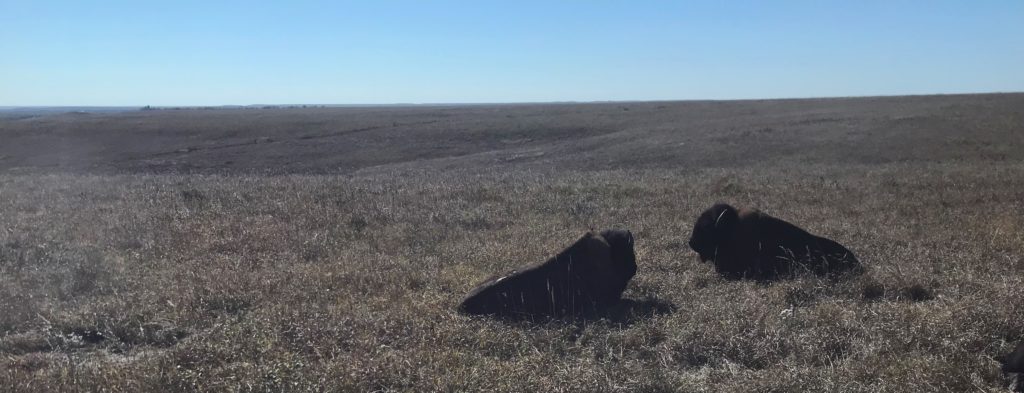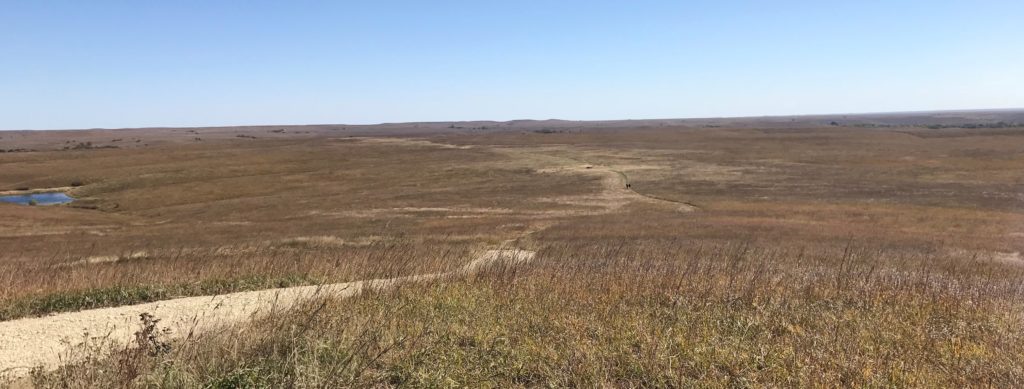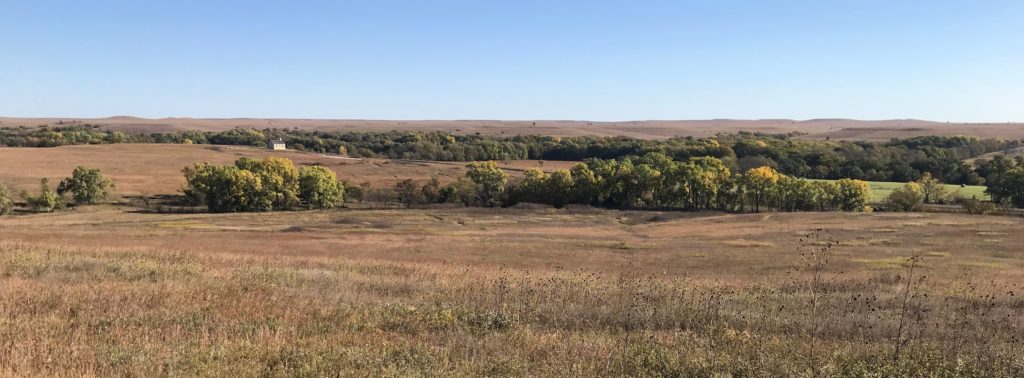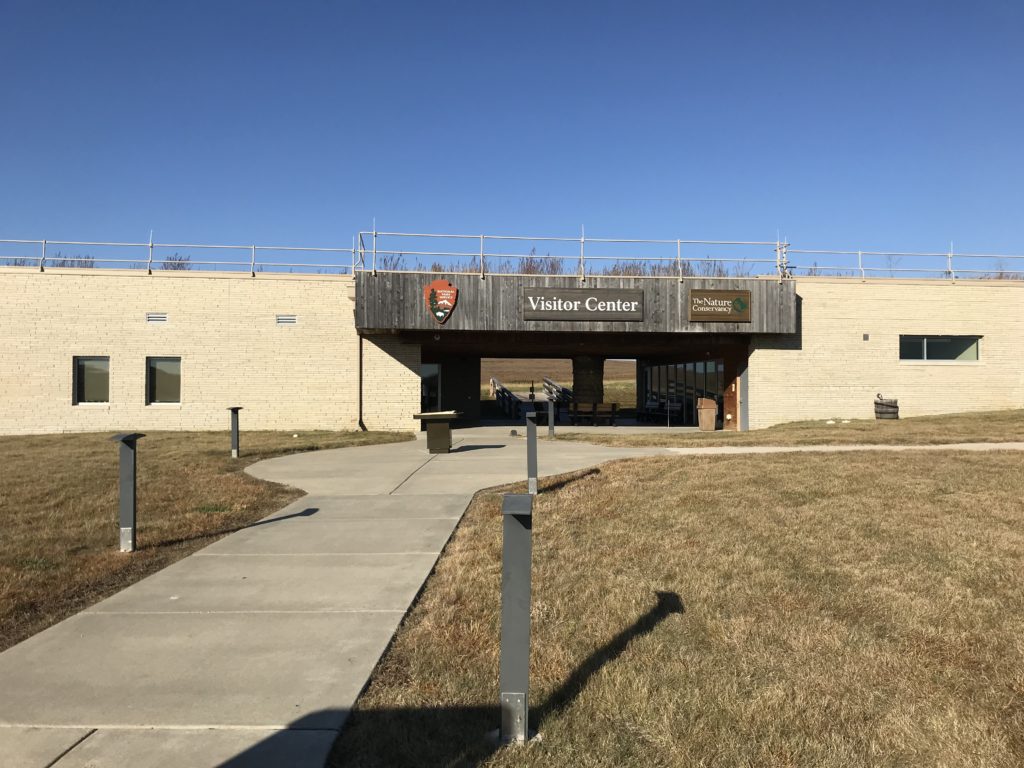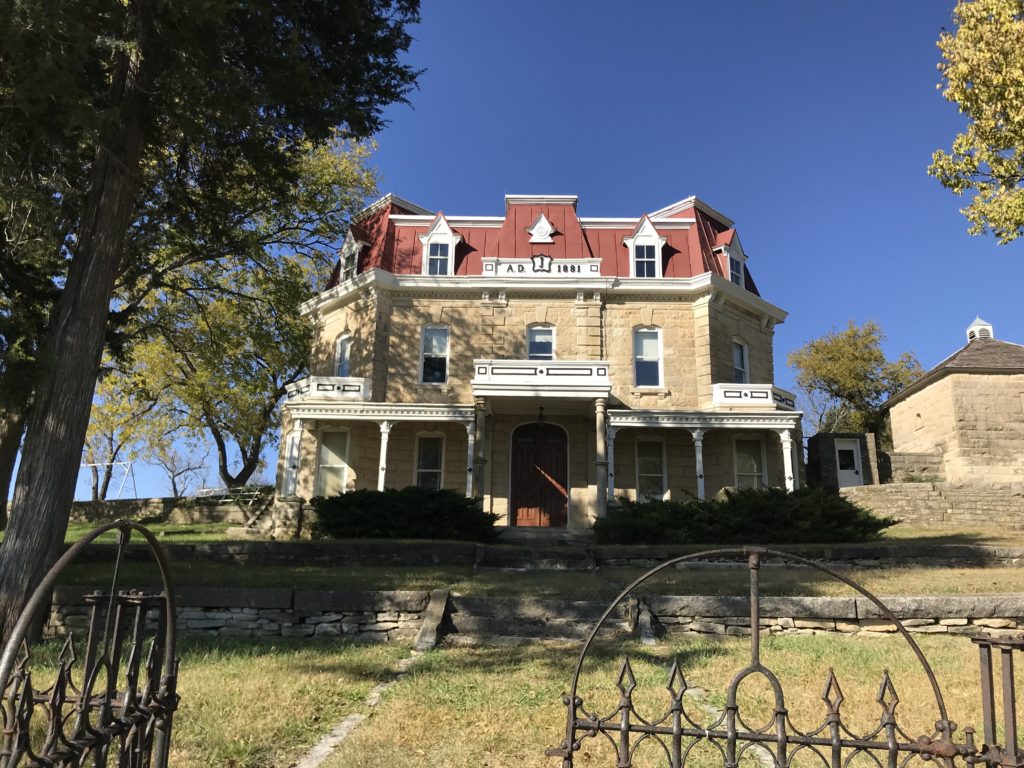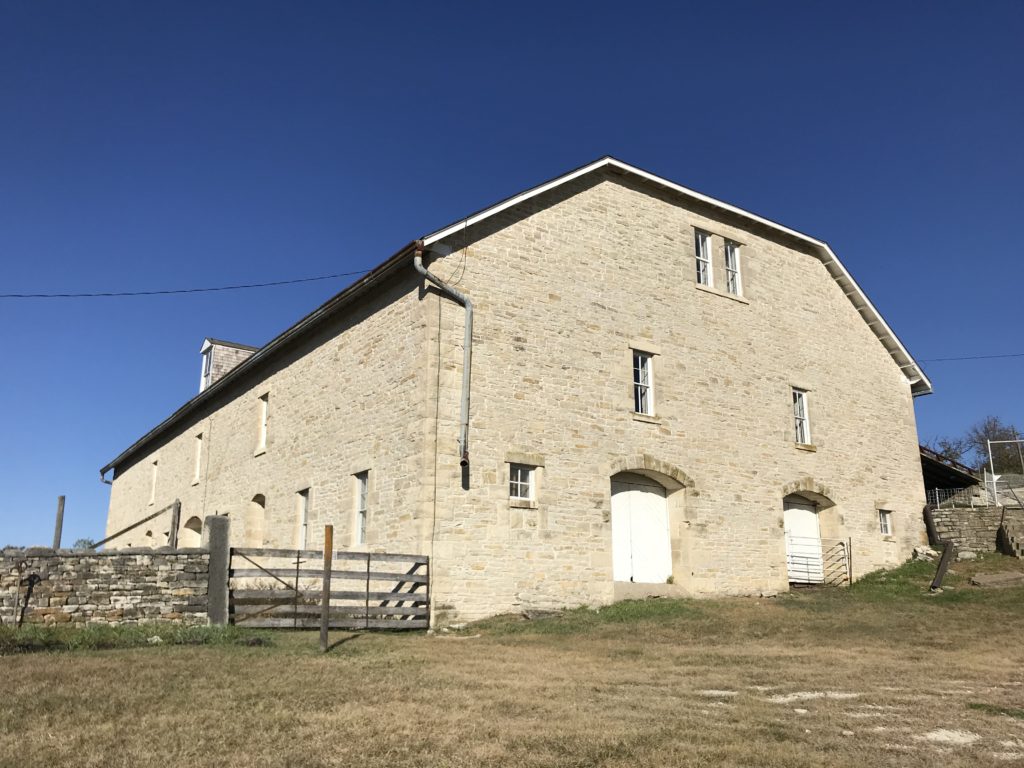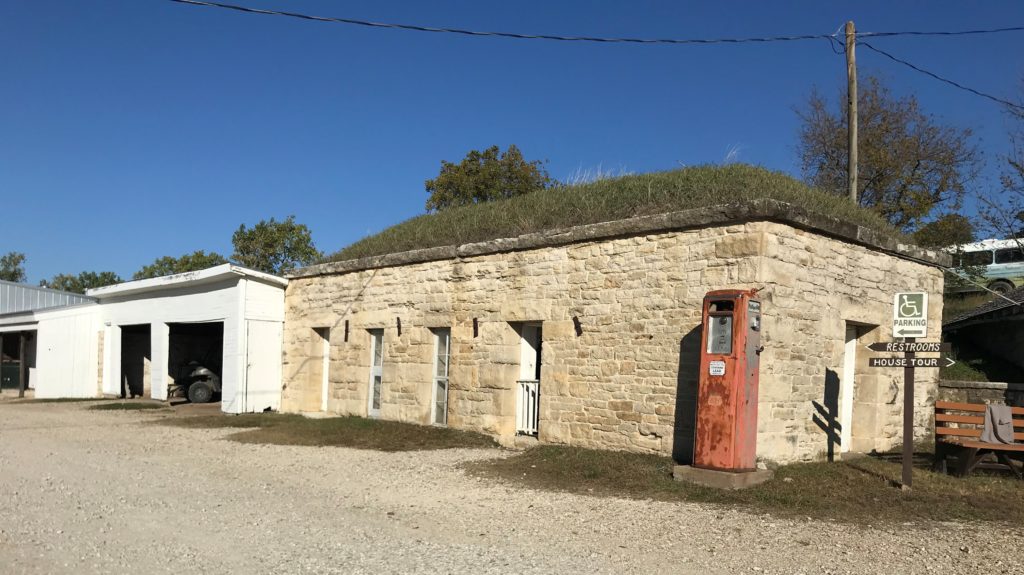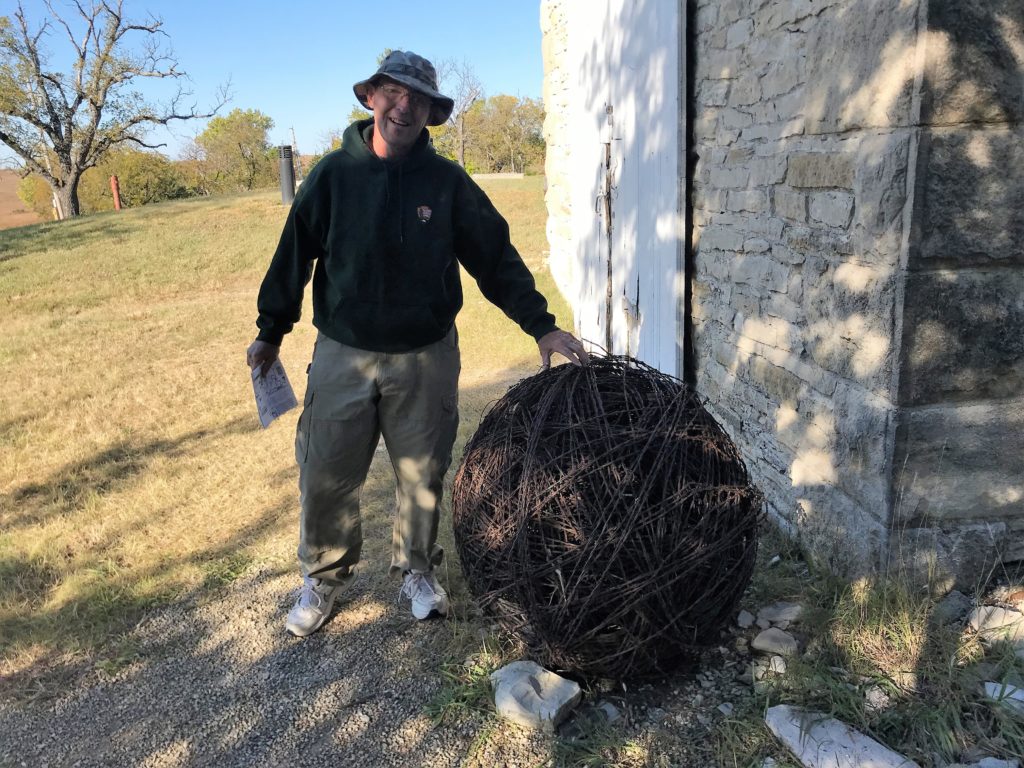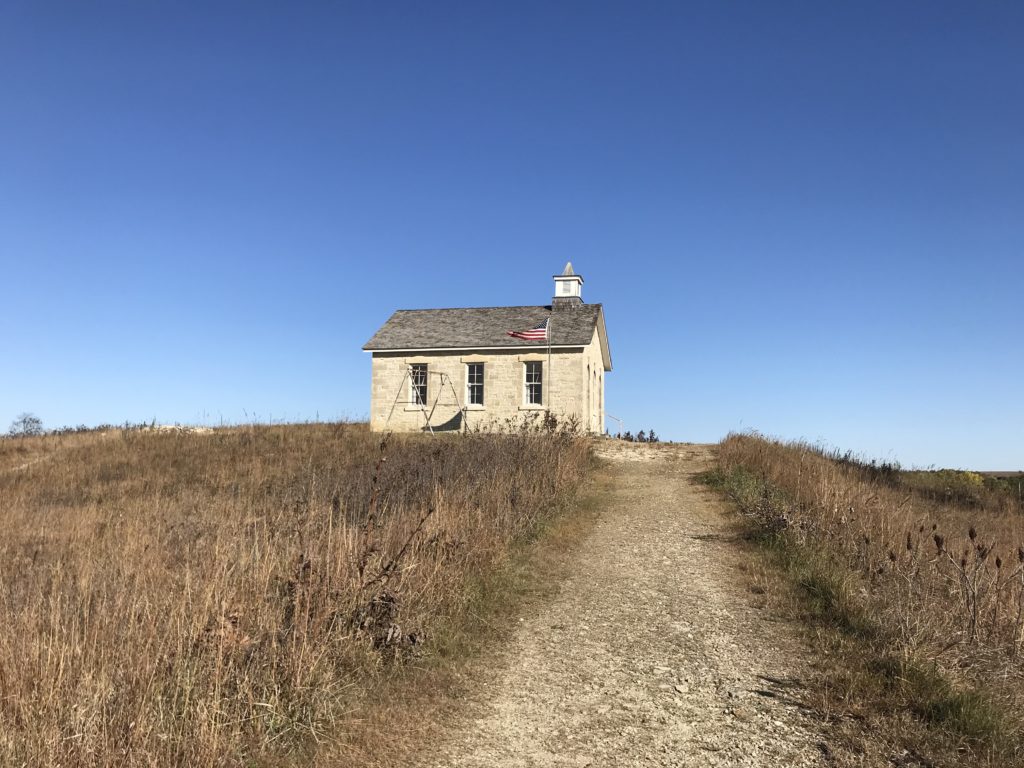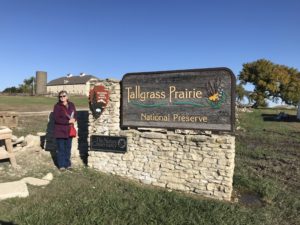 We had to spend the weekend in Junction City, Kansas, as we waited for the installation of our brake actuator. So we decided to head out to the nearest National Park site. This happened to be Tallgrass Prairie National Preserve near Emporia, Kansas.
We had to spend the weekend in Junction City, Kansas, as we waited for the installation of our brake actuator. So we decided to head out to the nearest National Park site. This happened to be Tallgrass Prairie National Preserve near Emporia, Kansas.
Tallgrass Prairie National Preserve was an unexpected delight. Tallgrass prairie once covered 140 million acres of central North America. Now less than 4% remains, with the tallgrass plowed under for farms. Most of the remaining area is in the Flint Hills of Kansas which were unsuitable for farming because of the lack of topsoil over the rocks. In 1996 Congress created an 11,000 acre preserve to protect this significant ecosystem.
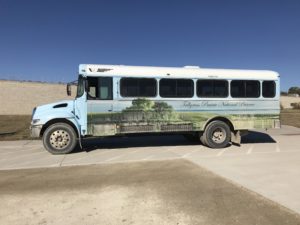 Today a Visitors Center forms a gateway to the preserve. After parking, you walk to the Visitors Center and decide if you want to take a “tour.” The tours are really a free bus ride into and out of the heart of the park. Because driving is restricted on the one road, your choice is to take the tour or walk. Tom and I decided to take the tour and save our walking for the areas closer to the Visitors Center. The preserve is so large that it has miles of trails over the hills and through the grass.
Today a Visitors Center forms a gateway to the preserve. After parking, you walk to the Visitors Center and decide if you want to take a “tour.” The tours are really a free bus ride into and out of the heart of the park. Because driving is restricted on the one road, your choice is to take the tour or walk. Tom and I decided to take the tour and save our walking for the areas closer to the Visitors Center. The preserve is so large that it has miles of trails over the hills and through the grass.
 We got the last two seats on a tour bus that was leaving in half an hour and explored the Visitors Center while we waited. The displays are very interesting, especially one on the root systems of various grasses found on the prairie. You can see from the chart how important these deep root systems were in keeping the topsoil in place.
We got the last two seats on a tour bus that was leaving in half an hour and explored the Visitors Center while we waited. The displays are very interesting, especially one on the root systems of various grasses found on the prairie. You can see from the chart how important these deep root systems were in keeping the topsoil in place.
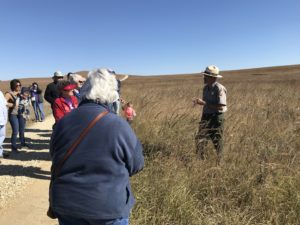 A ranger at the park led our tour. He also drove the old school bus on the deeply rutted road into the park. Along the way he pointed out the bison herds. Once we got to the top of the highest point in the park, he let us off the bus and pointed out the different kinds of grasses around us. Tallgrass prairie has big and little bluestem, switchgrass, and Indian grass. There are many other kinds of plants but these grasses predominate.
A ranger at the park led our tour. He also drove the old school bus on the deeply rutted road into the park. Along the way he pointed out the bison herds. Once we got to the top of the highest point in the park, he let us off the bus and pointed out the different kinds of grasses around us. Tallgrass prairie has big and little bluestem, switchgrass, and Indian grass. There are many other kinds of plants but these grasses predominate.
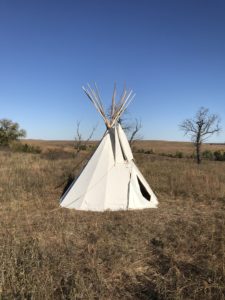 After the tour, Tom and I walked around the ranch at the front of the preserve and took the trail up the hill to the schoolhouse. The Spring Hill Ranch was the primary habitation in the area from 1878 until 1986 when the land was purchased by the Nature Conservancy. Stephen and Louisa Jones, the original owners, built the nearby schoolhouse for their daughter and ranch children. Between the ranch and the schoolhouse we walked by a reproduction of Wichita tent.
After the tour, Tom and I walked around the ranch at the front of the preserve and took the trail up the hill to the schoolhouse. The Spring Hill Ranch was the primary habitation in the area from 1878 until 1986 when the land was purchased by the Nature Conservancy. Stephen and Louisa Jones, the original owners, built the nearby schoolhouse for their daughter and ranch children. Between the ranch and the schoolhouse we walked by a reproduction of Wichita tent.
Today the Tallgrass Prairie National Preserve is a partnership between the National Park Service and the Nature Conservancy. The employees are NPS but much of the land is held in trust by the conservancy. Part of the land – not the part with trails – is leased to cattle ranchers.
Some people might think the miles of grassland look desolate. I found a sense of peace and beauty among the tall, waving grassland. The constant motion from the wind made the land look like a living sea.

